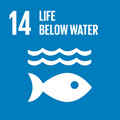- Docente: Giorgio Gatta
- Credits: 6
- SSD: M-EDF/02
- Language: Italian
- Moduli: Giorgio Gatta (Modulo 1) Matteo Cortesi (Modulo 2)
- Teaching Mode: In-person learning (entirely or partially) (Modulo 1); In-person learning (entirely or partially) (Modulo 2)
- Campus: Bologna
- Corso: First cycle degree programme (L) in Exercise and Sport Sciences (cod. 8512)
Learning outcomes
At the end of the course the student: - knows the diversifications between the movement in the terrestrial and in the aquatic environment; - know the characteristics of the different motor and sports activities that take place in the water; - is able to apply correct teaching methodologies, with specific application reference to swimming, to design and perform motor activity in an aquatic environment.
Course contents
- Organization of the course. Aims of the theoretical and practical lessons. Methods of study and evaluation. Continuity of the studies about aquatic competencies with specialist degrees. Research and work area. Practical laboratories, final examination, patents for swimming instructor.
- Knowing swimming. Social and cultural aspects of swimming in Italy. Historical background: birth, diffusion, historical, pedagogical and technical evolution of swimming. Methodological and pedagogical problems of swimming science. Educational and social values of swimming. The work in the world of swimming.
- Physical and dynamic characteristics of the aquatic environment. The flow theory, the Reynolds number. Newton’s laws. Fluid mechanics applied to swimming. Differences between land and aquatic motility. Buoyancy, density and specific gravity.
- Law of inertia. Hydrodynamic resistance, drag: shape, friction, wave. Active and passive drag, methods of analysis and measurement. Influence of drag on the movement and speed in water. Drag and energy cost of the movement in water. Acceleration and action-reaction in water. Propulsion. Locomotion in water. Applied mechanical models. Lift and vortex theory.
- Factor affecting the speed in swimming. Mechanical and propulsive power. Propelling efficiency. Functional models of swimming movement in the aquatic environment. Research in the aquatic field. Functional evaluation tests. The energy cost of swimming. Video-based and inertial sensors methods for evaluation in swimming. Technical swimming-suits.
- Physiological effects of immersion. Human movement with no-gravity. Acute and chronic effects of long immersion in an environment without gravitational load. Micro-gravitational environments. Running in water. Suits with graduated compression.
- Dangers in water (accidents, prevention). Swimming techniques for rescue. Approach and recovery in swimming rescue. Pathophysiology of drowning. Emergency procedures in the water. Life-saving patents.
- The immersion: historical and psychological topics. Apnea diving: didactics and technique. Scuba diving. The diving bells. Physics of the diving. Embolism and the hyperbaric chamber. Patents and professional activities.
- Definition of situational sport. The "action" principle. Characteristics of water polo (historical evolution). Tactical thinking in water polo. The tactical evolution of water polo. Fundamentals of water polo. Specific technical movements. Didactic progression in water polo. Teaching and training methods in water polo.
- Aquatic fitness. Muscular action in aquatic exercise. Aquatic equipment for functional water exercise. Synchronized swimming. Diving from a platform or springboard. Finswimming.
- Swimming skills and aquatic skills. The development of aquatic movement: applications. Balance, movement and breathing in water. Neonatal activity and first propulsion. Water natural reflexses. Fear of water.
-Elementary swimming motion. Teaching in swimming. Teaching stages in swimming education. Planning, models and strategies in the teaching of swimming. Methodology during the different phases of swimming learning. The organization of a course and swimming lessons.
- Swimming techniques in competitive strokes. Starting and turns techniques in swimming. Technical errors, feedback and correction methods in teaching swimming. Monitoring the swimming technique. THe historical evolution of competitive swimming. Mechanical parameters of stroke and inter-limb coordination. The organization of the Italian Swimming Federation.
Readings/Bibliography
Notes of the lectures (slides-articles) inserted on Alma-Campus. For further information: Maglischo E.W. "Swimming even faster" Mayfield Publishing Company 1993.
Teaching methods
Lectures are planned with technical aids for teaching and participation at the invitation of expert speakers for the theory. Practical activity in water led by trainers. 70% of the attendance to the lessons of the Course is compulsory (both in theory and in practice).
Assessment methods
At the end of
Teaching tools
Use of Video projector, PC, overhead projector, whiteboard.
Links to further information
http://www.unibo.it/SitoWebDocente/default.htm?upn=giorgio.gatta@unibo.it
Office hours
See the website of Giorgio Gatta
See the website of Matteo Cortesi
SDGs


This teaching activity contributes to the achievement of the Sustainable Development Goals of the UN 2030 Agenda.
